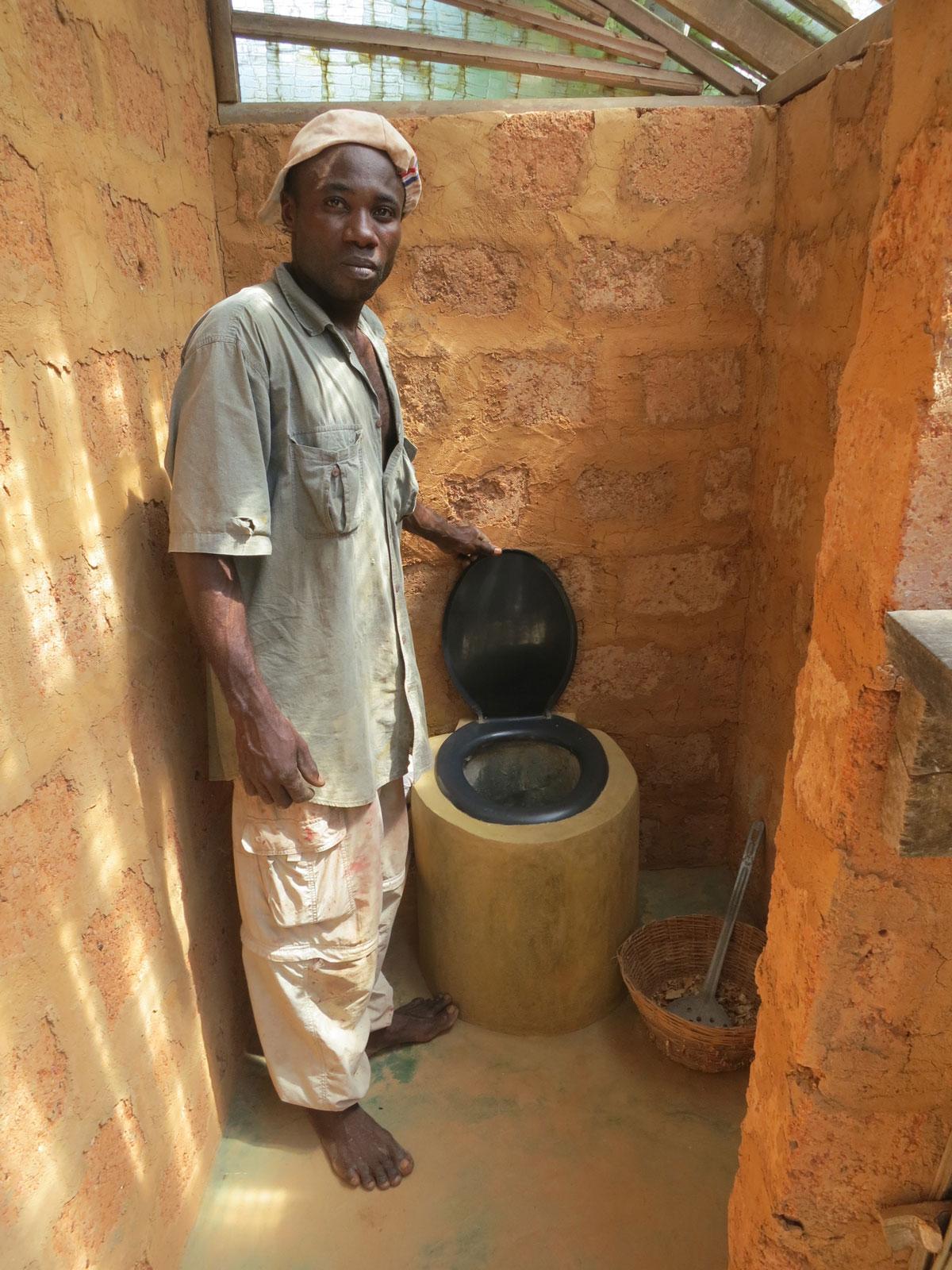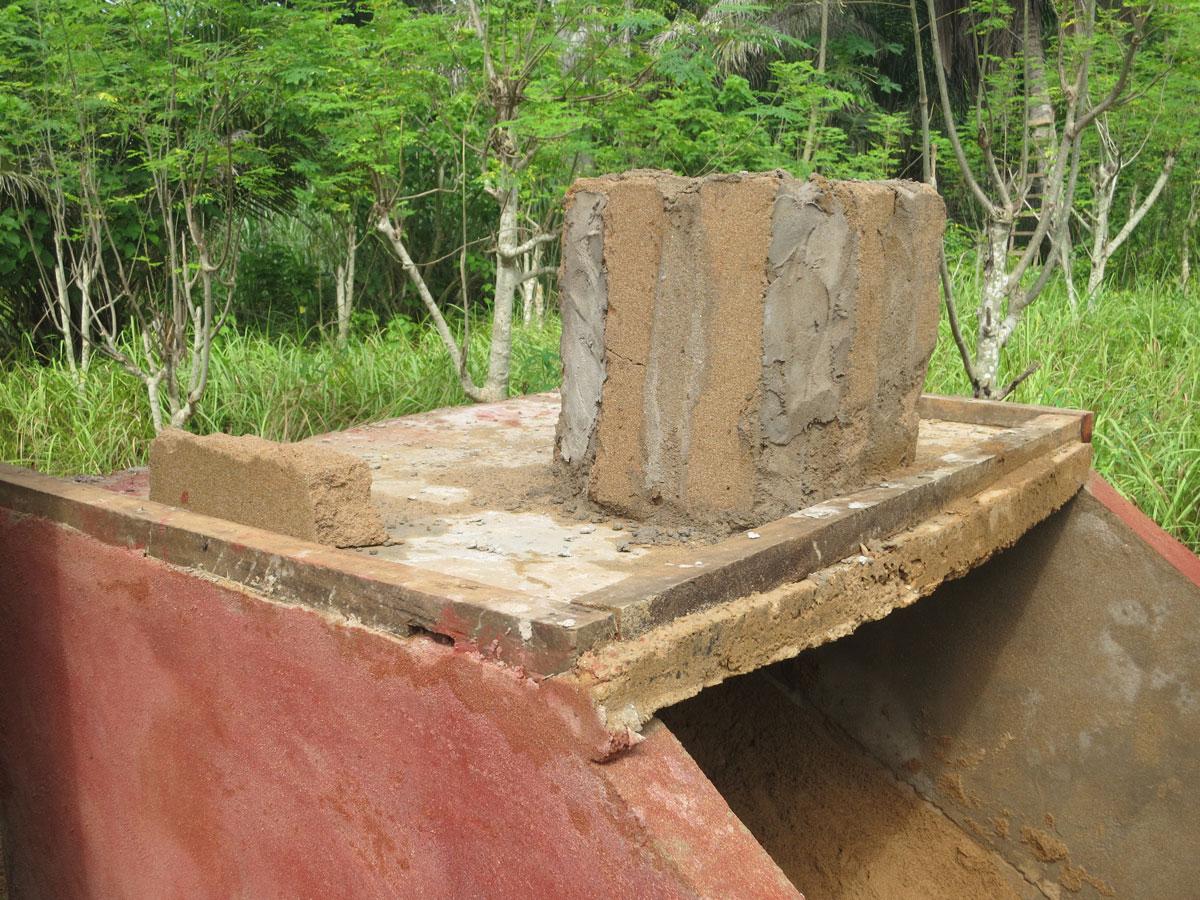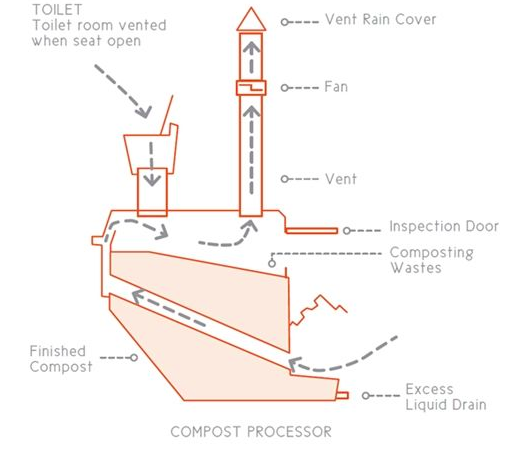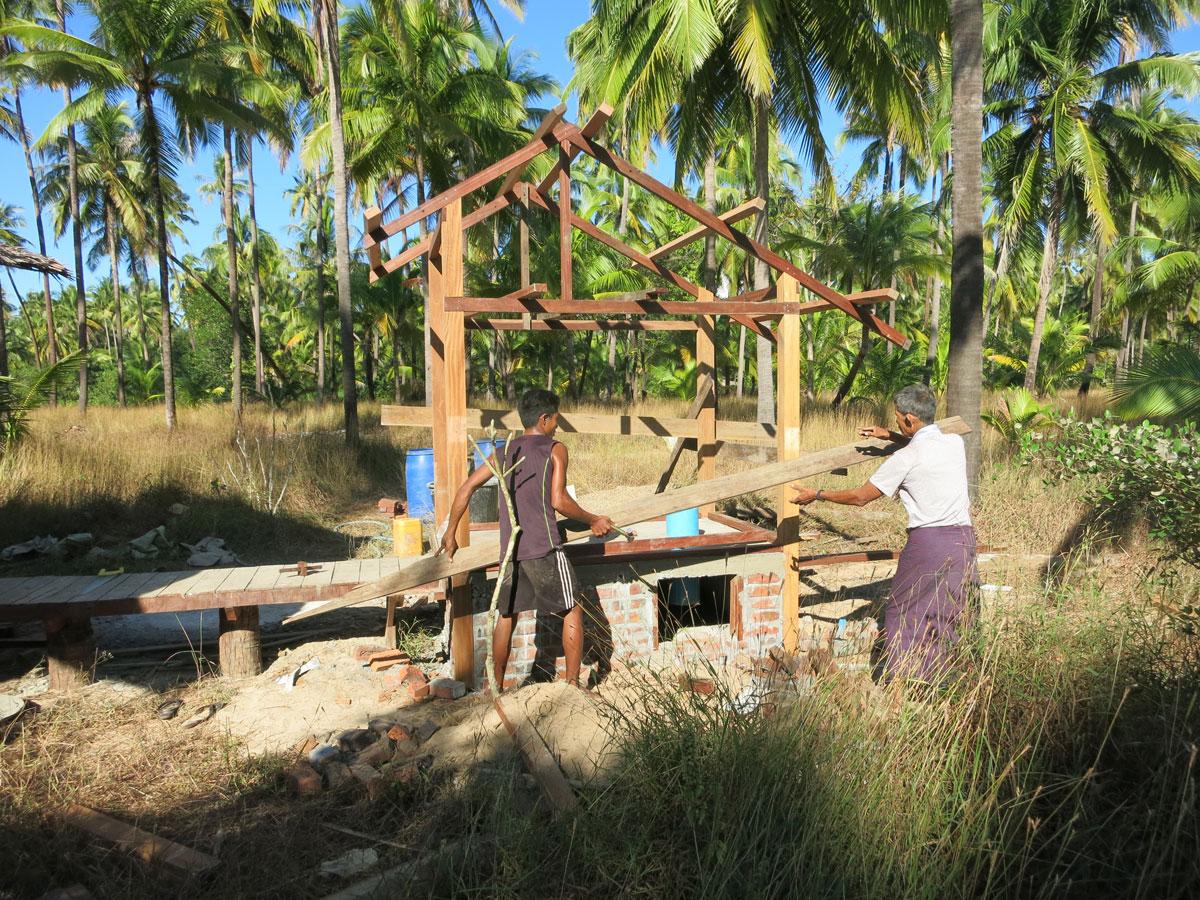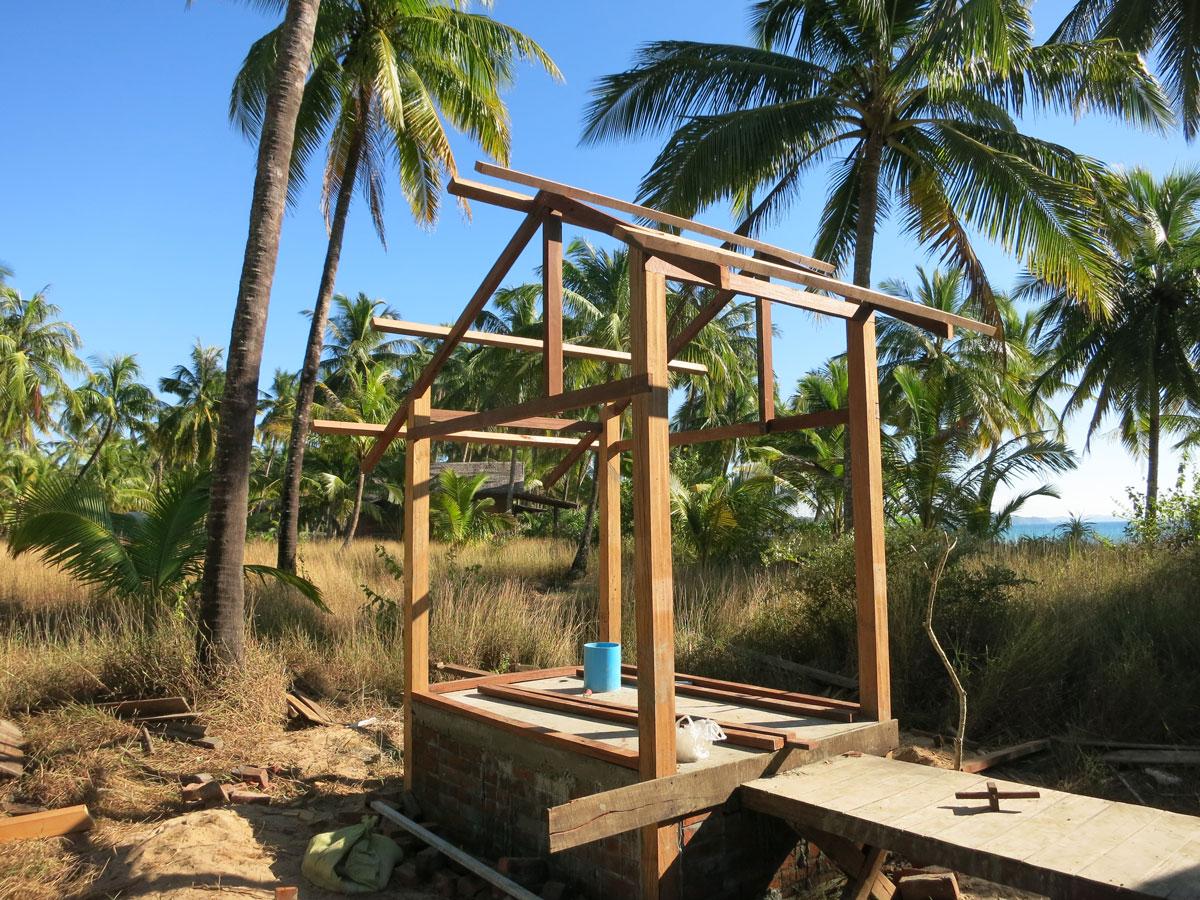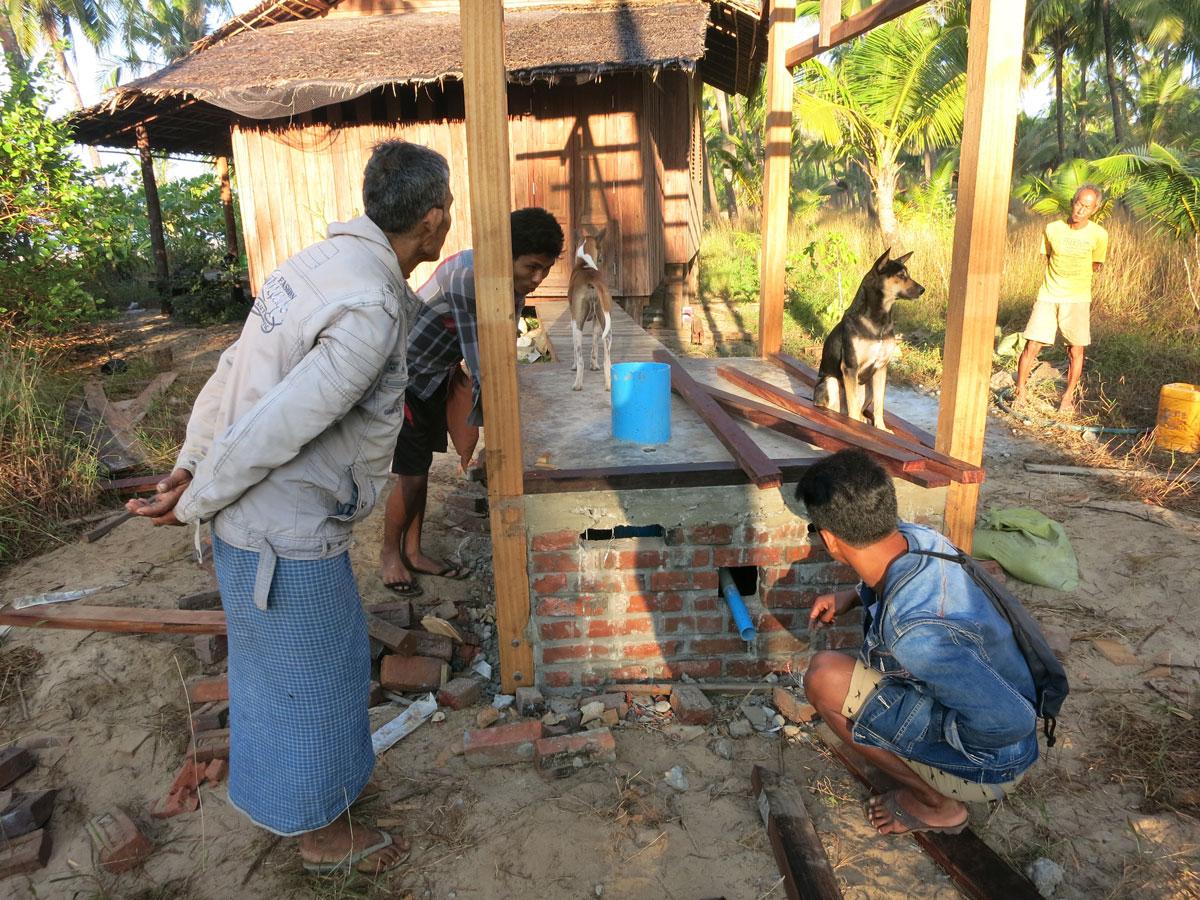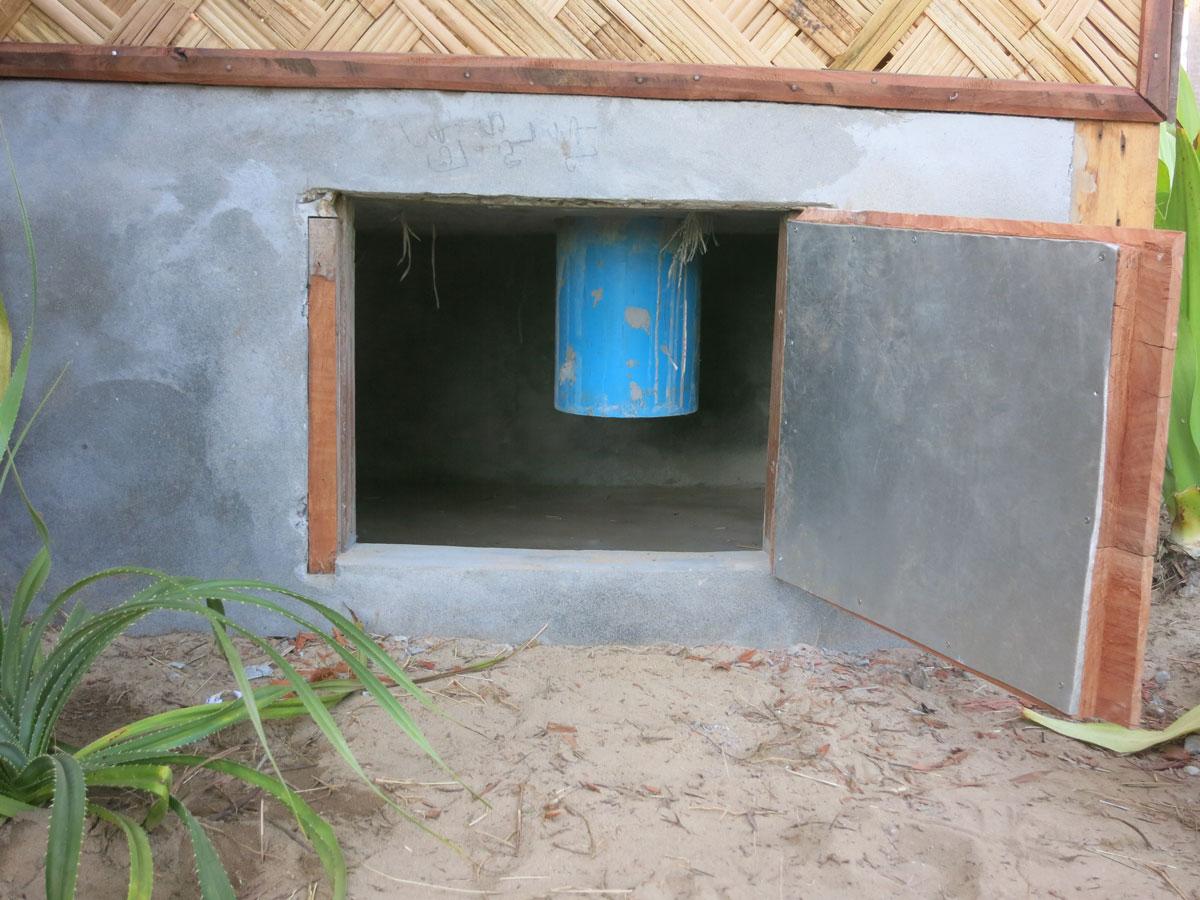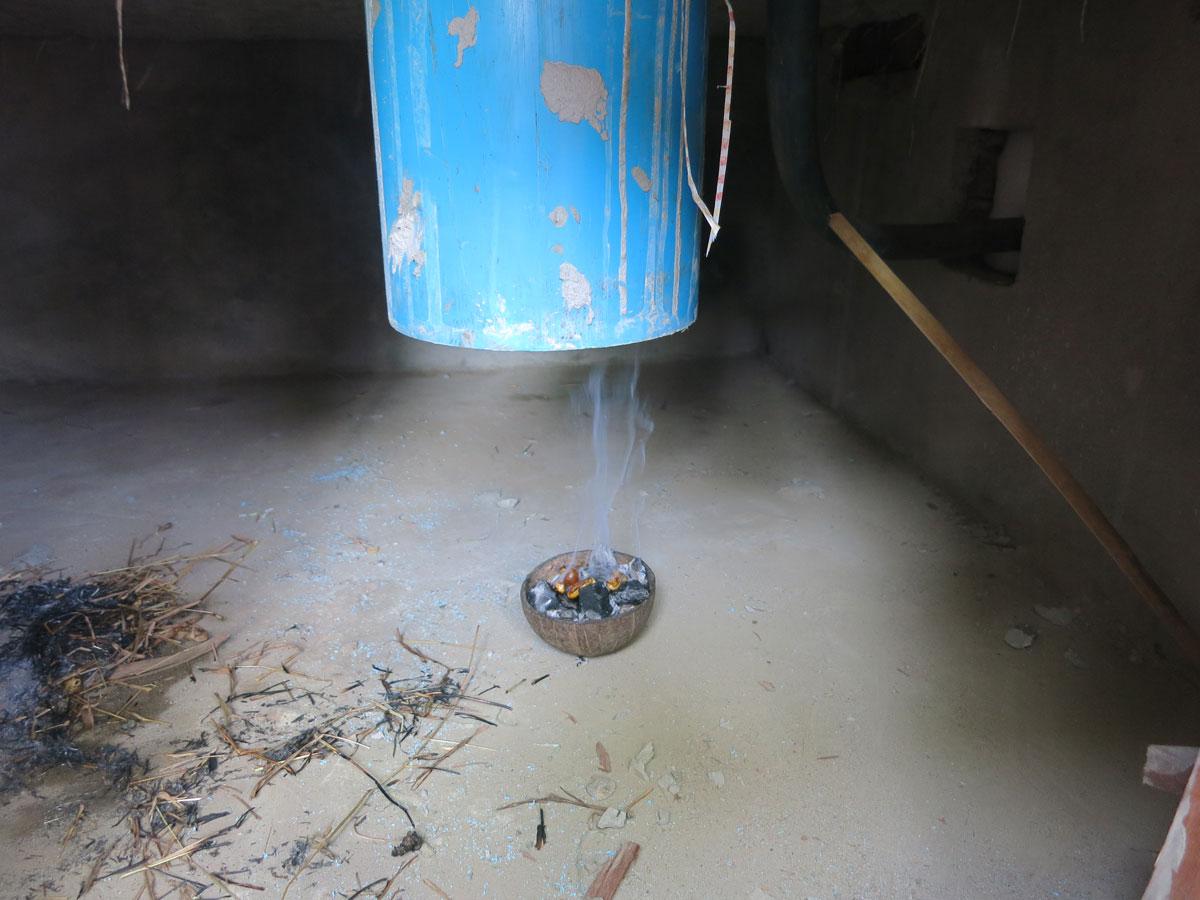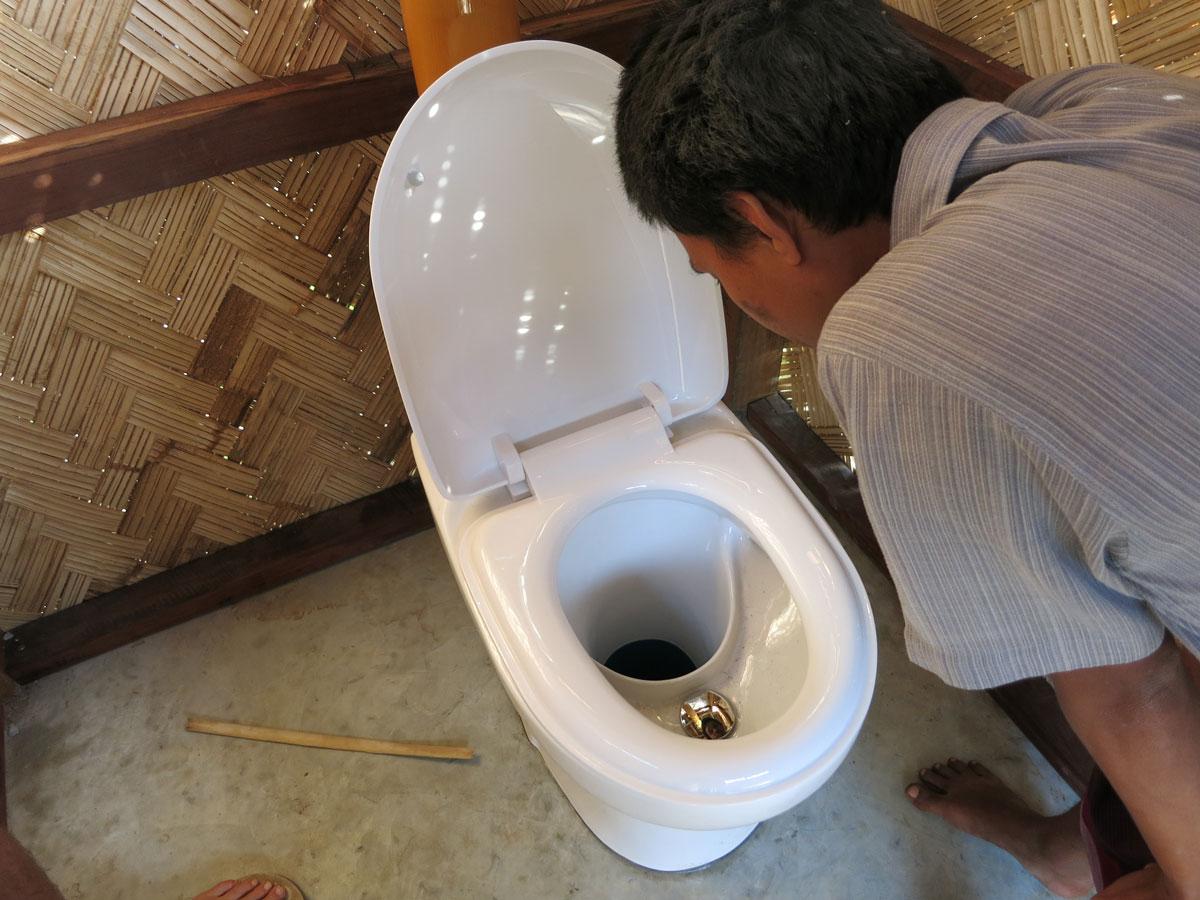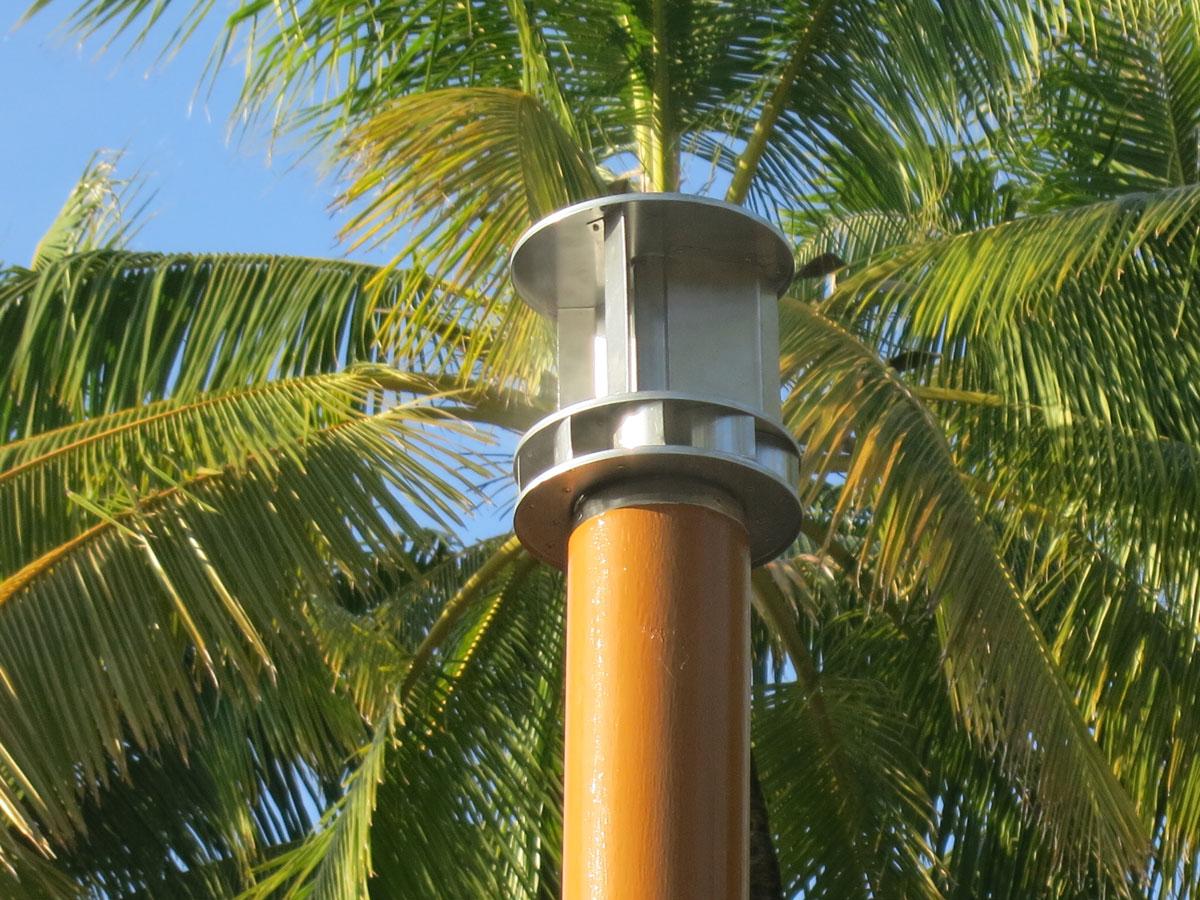The first time in my life I ever came across and had to use a composting toilet was when I was visiting the experimental, rather hard-core Escape3points eco lodge in Cape Three Coast, Ghana. The architect had followed the Clivus Multrum composting toilet model, one of the first models invented in Sweden by Rikard Lindström in 1939. The model I came across in Africa looked like this:
This composting toilet concept is basically built over a larger collection chamber and it collects both urine and faeces to then compost it into fertile earth.
As human beings, we use the toilet around 5x/day, producing around 2 litres of urine. The main advantage of a composting toilet is that it won't use fresh water to work, nor produce any black water (mix of clean flush water and human excrements) at all. Black water needs safe storage and some treatment process before it can be released into nature. With composting toilets, what humans leave behind is collected and cleaned of harmful microorganisms by a longer composting process to finally turn it into compost.
For centuries, even in Asia, collecting human waste in the cities and selling it to farmers was a traditional business. One of the world’s largest composting toilet projects started in 2002 in the coal mining boomtown of Ordos, China (where it later failed). Here, 14 apartment buildings with 830 apartments were planned with composting toilets. In this part of northern China, water is extremely scarce. This was the main reason for the Stockholm Environment Institute to propose composting toilets and to find out how that would work in a city environment. Why the project finally failed, you may read here: Composting Toilet Project in Ordos, China
Making friends with the idea of pooing waterless
After working in Ngapali hotels for two seasons and seeing how difficult it was for the local government to take proper care of black water sewage (when some hotel owners were too reluctant to spend the money to pump out their sewage tanks properly), I just remembered my first challenging, yet pleasant experience with composting toilets in Ghana. There were absolutely no unpleasant odours at all, though in my eyes, constructed out of concrete, they looked rather clumsy. Yet one thing I did not particularly like was looking into the collection chamber from the backside of the toilet. The fact that Clivus Multrum systems don't separate faeces from urine means that an unpleasant looking and smelling leachate will collect at the lower end of the faeces chamber. In that eco lodge where I saw this first, they simply built a (clogged) drainage pipe to drain the leachate somewhere into the ground. I felt that this was not really correct either. And so I decided to still look around for another system that would be cleaner, with no leachate in the end.
As all the fresh water used at Arakan Nature Lodge comes from our own shallow wells, it was crystal clear to me that I would not want to build neither septic tanks (that may be leaking) nor leachate drains. In other words: I would never want to mix our precious fresh water with "pee and s....".
So luckily I got into building urine-separating (dry) composting toilets instead, where urine would be collected separately and could be immediately used for fertilizing purposes, whilst on the end part of the solids, no leachate would form at all. Wostman's Eco Dry toilet model is what I had in mind, because it looks just like a normal toilet, is made of porcelain and comfortable to use. I was fully aware of the important factor of acceptance by our lodge guests and did not want to put them through a lengthy or difficult phase of coming to accept the toilets. But rather I would want to see their amazement when they discover how easy and natural Eco Dry toilets really are.
Our first prototype
Building our first prototype reading my way through countless instruction manuals, well, was not easy. Something inside of me just always let me postpone it. Today I know it was my own distaste of bad smells combined with a kind of negative inner voice warning me: it might not work! An Indian engineer I talked to about my composting toilet project bluntly predicted it wouldn't. He wanted to sell me another type of loo called Enbiolet used in Indian Railway stations. It works with technology patented by NASA, a so-called aerobic digester with five strains of bacteria that convert human waste into water and CO2 within 24hours. But frankly this sounded too good to be true!
So last December, we finally gave it a go. The model Wostman toilet had been standing around at our project base for too long. We started with construction of the basement chamber, cement and bricks, which is only 60cm high. A massive PVC pipe was inserted into the toilet floor proper where it acts as an extension of the toilet's solid waste exit. Another opening for the urine collection was included in the concrete floor. The urine collection pipe would lead to a canister behind the toilet that could easily be emptied/replaced.
A 10cm PVC pipe was added as aeration pipe standing high, with an external rotating ventilator moved by the winds. This piece sits at the high end of the pipe, way over the toilet room's roof. It is the main feature to aerate all fumes out of the collection chamber.
We then carefully lifted our toilet on top of the solid pipe extension and fixed the connection airtight. After that we added a collection bin into the collection chamber that could be easily emptied, cleaned and reset.
The final test before we inaugurated the toilet was conducted as follows: We put frankincense on glowing embers and placed them directly under the toilet's solid waste opening. Great amounts of holy smoke!...we wanted to see if any of the fragrant smoke would make it up the toilet's large solid drain opening. We closed the collection room's door and went up to open the toilet seat, but lo! Not one trace of frankincense could be detected! Instead the fragrant smoke rose nicely through the aeration pipe and visibly exited out through the rotating ventilator.
For one month the toilet has been in use now and it works so perfectly! The cost of one toilet is much higher than an average water toilet as we must bring them in from Sweden, too. Yet, we are totally convinced and happy to invest this money. The Wostman Eco Dry toilets will help to get the amazement and swift acceptance if not adoration of our guests for sure. And it will give our lodge a truly sustainable base feature we can be proud of! Far and wide in Myanmar, no one has used this simple, clean technique of going to the toilet to make their lodge a real eco lodge.
But wait: How exactly are we composting the poo? And what are we going to do with the resulting compost? I will tell you about that in one of our next blogs.


